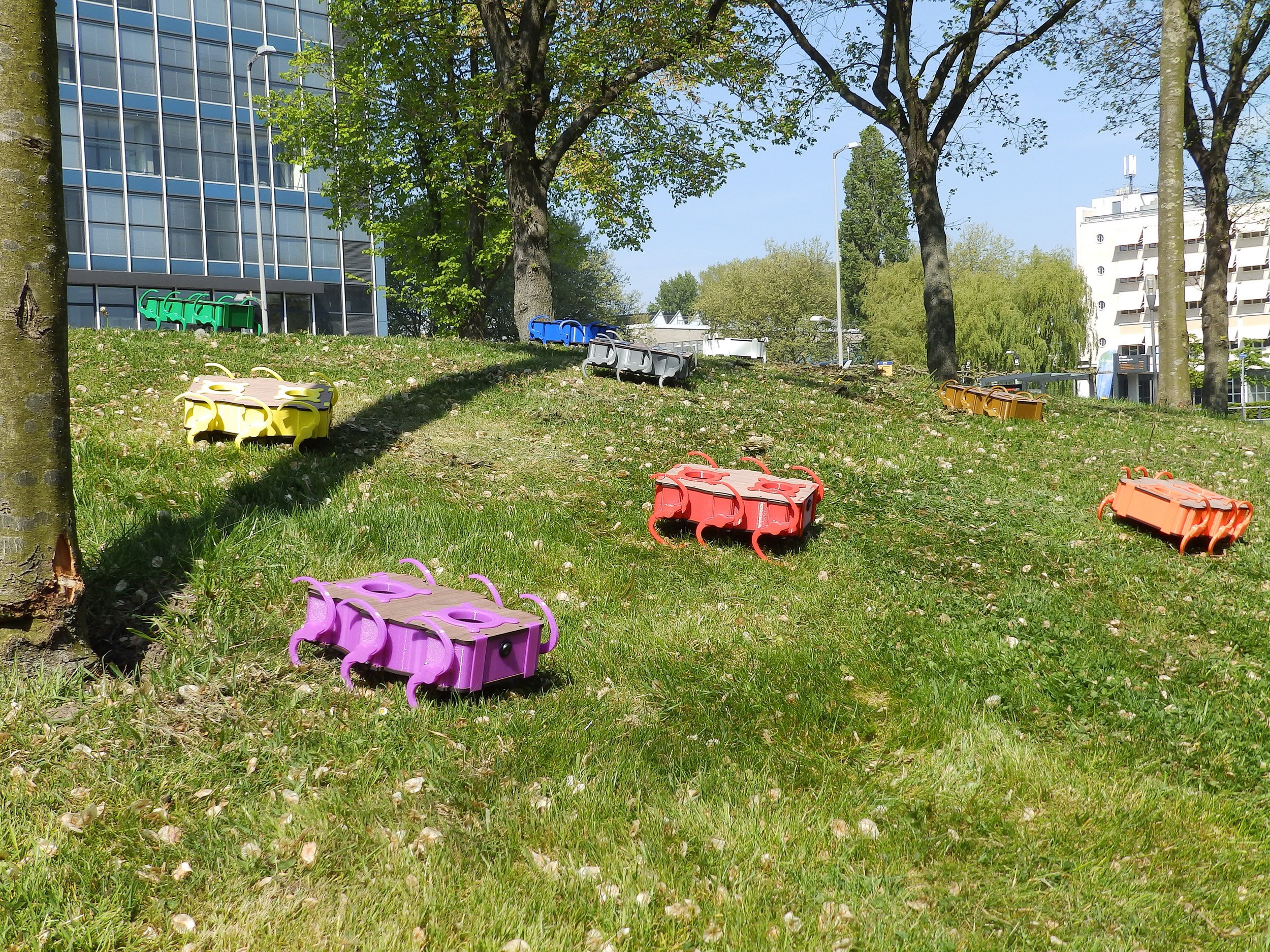
Autonomous swarms of robots capable of exploring dangerous terrains soon could be deployed in disaster areas like earthquakes now that engineers have developed a method to mass produce them.
Students at the Delft University of Technology in the Netherlands created a modular design for a hexapod robot called a Zebro. By linking up with other Zebros, the robot can be sent out in swarms to search for earthquake victims in a way similar to a swarm of ants looking for food.
The insect-inspired Zebro robots come equipped with audio sensors, and by relaying the signals to other robots in their vicinity, emergency services can be notified of survivors trapped under rubble.

"We want to keep the robots' behavior as simple as possible, while ensuring that they can also hold their own in our everyday surroundings," said Associate Professor Chris Verhoeven.
"An insect's intelligence is nothing compared to ours. But they have been on Earth much longer than us, and will probably outlive us. Our robots also need to become survivors. Intelligence is fatal, we are leaving that well alone."
Programmable robot swarms have also been touted as potential solutions for construction efforts, environmental remediation and medical applications. By harnessing the power of the swarm, robots can act more efficiently than single robots when performing complex tasks in natural environments.
According to the Wyss Institute at Harvard University, flying microbots could one day be used to pollinate flowers.
Industrial design engineering student Mattijs Otten came up with the modular design concept for the Zebro, which is essential for the next stage of the robot's development. In total, 200 components make up each Zebro robot, most of which can be fitted together in a similar way to Lego bricks.
Making the robot modular not only makes it easier to manufacture on a large scale, it also makes modifying its design for different scenarios more simple. However, Verhoeven says that development of the underlying software will be a challenge.
"Designing the software will be extremely complicated," Verhoeven said, "precisely because of the required simplicity and survival requirements."
The Zebros robots will be presented at the Dutch Design Week in Eindhoven from October 21-29.
Uncommon Knowledge
Newsweek is committed to challenging conventional wisdom and finding connections in the search for common ground.
Newsweek is committed to challenging conventional wisdom and finding connections in the search for common ground.
About the writer
Anthony Cuthbertson is a staff writer at Newsweek, based in London.
Anthony's awards include Digital Writer of the Year (Online ... Read more
To read how Newsweek uses AI as a newsroom tool, Click here.








